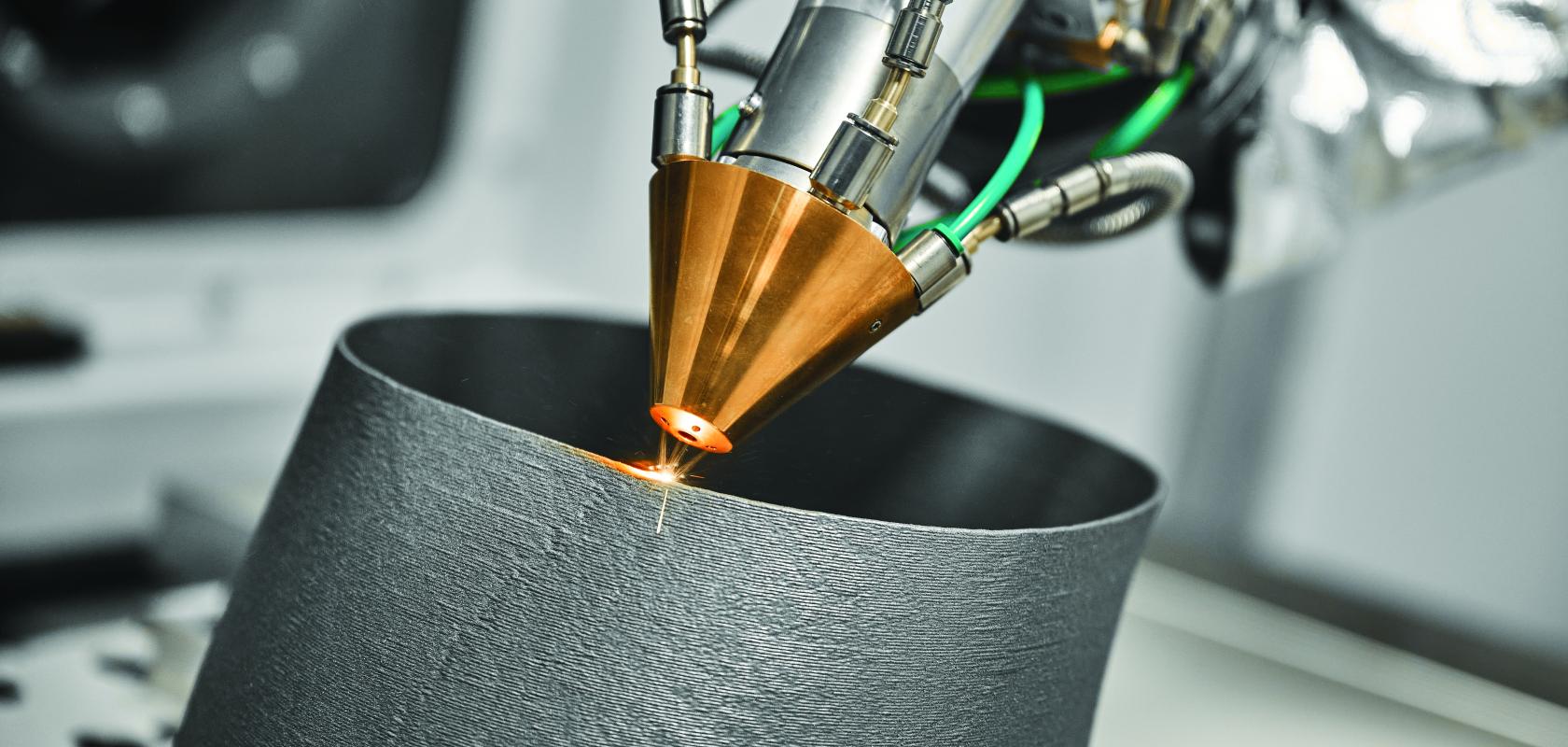How optical emission spectroscopy (OES) is transforming metal additive manufacturing by enhancing real-time monitoring, quality control, and efficiency in 3D printing.
Additive manufacturing, known as 3D printing, has significantly transformed modern production and design. Particularly in 3D printing of metal, the ability to create complex, high-strength components layer by layer has opened new possibilities across various industries. This article explores how spectroscopy enhances the process, specifically optical emission spectroscopy (OES).
What is metal additive manufacturing?
Additive manufacturing builds 3D objects by depositing material layer-by-layer, contrasting with traditional subtractive methods that remove material. 3D metal printing involves high-power lasers to fuse metal powders or wires into the desired shape.
3D metal printing finds use in several industries:
- Aerospace: Metal additive manufacturing produces lightweight, complex components like turbine blades and structural brackets that reduce fuel consumption and improve efficiency.
- Medical: Creating customised implants and prosthetics tailored to individual patients. For example, titanium implants for knee and hip replacements improve fit and reduce recovery times.
- Automotive: Producing high-performance parts with intricate geometries, such as lightweight suspension and engine parts.
- Tooling and moulds: Fabricating durable tools and injection moulds with optimised internal structures that improve cooling efficiency and extend tool life.
Technologies and methodologies
There are multiple methods for 3D metal printing. This article highlights two primary technologies: laser powder bed fusion (LPBF) and directed energy deposition (DED).
- LPBF: A laser scans a bed of metal powder, fusing selected areas to form each layer. The platform lowers, and new powder is applied until the object is complete.
- DED: A laser melts metal powder or wire fed from nozzles, with the substrate moving to build the part layer by layer. DED is favoured for its high throughput and larger build volumes.
Challenges and limitations
Despite its advantages, metal additive manufacturing also faces several challenges. Technical issues can arise, such as defects like melt pool instability and thermal deformation, which can compromise the quality of the final product. Additionally, the high costs of metal powders used in the process necessitate efficient use and stringent quality control measures to ensure that the manufacturing process remains economically viable.
The role of spectroscopy in additive manufacturing
Spectroscopy, particularly OES, involves analysing the light emitted by a material to determine its composition. The high temperatures in metal 3D printing make OES an ideal tool for real-time process monitoring, allowing manufacturers to ensure quality and consistency throughout the production process.
Integration of OES in metal 3D printers
OES can be seamlessly integrated into both LPBF and DED systems to monitor the printing process. For instance, a fibre-optic cable can collect light from the melt pool, continuously analysing the material's composition and colour temperature. This real-time monitoring enables manufacturers to detect and correct defects early, significantly improving the final product's quality.
Case study: University of Brussels
At the University of Brussels, researchers successfully integrated an Avantes spectrometer into a DED printing head to monitor the colour temperature of the melt pool. The primary goal was to develop a non-contact control system to prevent excessive heat transfer and reduce material stress during printing. The study demonstrated that defects, such as oxidation, could be identified through specific changes in the emitted light. By correlating these optical signals with material behaviour, the researchers could detect potential issues in real-time and adjust the process parameters accordingly. This case study highlights how integrating OES into 3D metal printing ensures higher-quality outcomes and enhances the manufacturing process's overall efficiency.
Benefits of spectroscopy in metal 3D printing
OES offers numerous benefits for metal additive manufacturing, including enhanced quality control and defect detection. By monitoring specific emission lines correlated with material composition, OES allows manufacturers to identify defects early in the process, ensuring that any issues are addressed before they impact the final product. Moreover, OES enables real-time material characterization, allowing for continuous optimization of printing parameters. This level of control helps reduce waste, lower costs, and improve the efficiency of the manufacturing process.
Avantes spectrometer solutions
Avantes offers spectrometers well-suited for integration into metal 3D printers, such as the AvaSpec-NEXOS. This compact spectrometer is easy to integrate and offers high-speed performance, minimal stray light, and a broad wavelength range (190-1100 nm.
Avantes provides robust fibre-optic cables that can withstand high temperatures in harsh environments. These solutions ensure reliable performance in the demanding conditions of metal additive manufacturing.
Conclusion
Metal additive manufacturing has revolutionised industries by enabling the creation of complex, high-strength components. However, ensuring quality and efficiency remains a challenge.
Spectroscopy, particularly OES, provides a powerful tool for real-time monitoring and optimisation of the printing process.
By integrating advanced spectrometer solutions, manufacturers can achieve higher quality, reduced waste, and lower costs. As the technology continues to evolve, the role of spectroscopy in 3D metal printing will only become more critical, driving further advancements and applications.
Don't hesitate to contact us for more information on Avantes spectrometer solutions. For detailed information on Avantes’s spectrometer solutions visit the company website.


